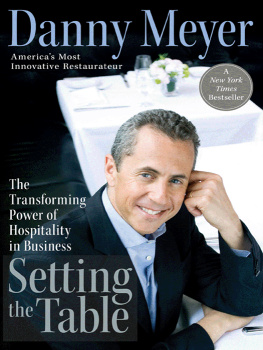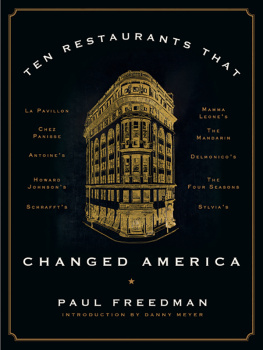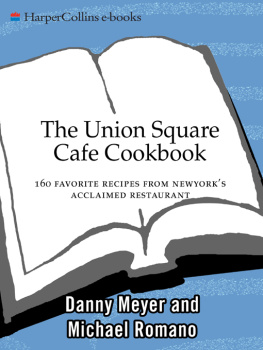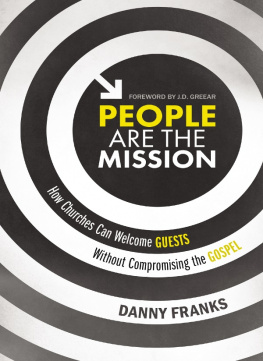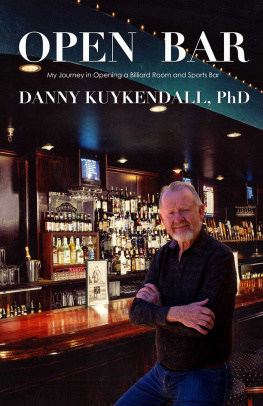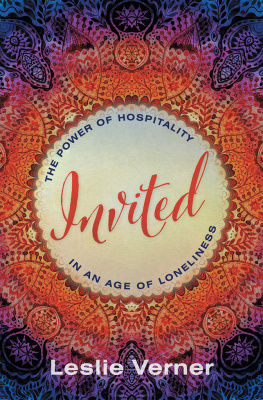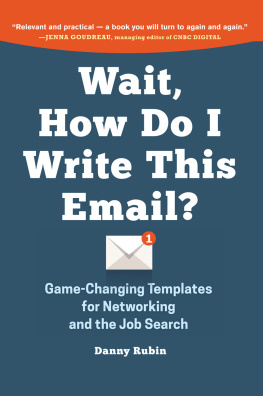For Audrey, Hallie, Charles,
Gretchen, and Peyton
and
For Mary Smith
Contents
10. The Road to Success Is Paved
with Mistakes Well Handled
O VER THE COURSE OF the past twenty-one years Ive opened and operated five white-tablecloth restaurants; an urban barbecue joint; a feel-good jazz club; a neo-roadside stand selling frozen custard, burgers, and hot dogs; three modern museum cafs; and an off-premises, restaurant-quality catering company. So far, I havent had the experience of closing any of them, and I pray I never will.
My business is very much in the public eye; its highly scrutinized, and it invites passionate opinions from experts and amateurs alike. A debate between people about their favorite restaurant can take on the heat of a political or religious discourse. And if you want to persist and thrive, youd better not rest on your laurels. Every time you look up, theres another new, eager competitor trying to attract the attention and affection of the public and the media, each hell-bent on tasting and weighing in on the newest thing.
But theres nothing Id rather be doing. I was born to go into business for myselfand I was destined to find a business that would allow me to share with others my enthusiasm for things I find pleasurable. My craving for the adventures of travel, food, and wine is what first compelled me to do what I do. In fact, like so many other entrepreneurs Ive met, Im not even sure I had much of a choice: a career in the restaurant business was going to tap me on the shoulder even if I hadnt found it first.
All these years later, the delights of the table continue to stimulate me as I pursue my career. But what really challenges me to get up and go to work every day, and has also motivated me to write this book, is my deep conviction about the intense human drive to provide and receive hospitalitywell beyond the world of restaurants. Within moments of being born, most babies find themselves receiving the first four gifts of life: eye contact, a smile, a hug, and some food. We receive many other gifts in a lifetime, but few can ever surpass those first four. That first time may be the purest hospitality transaction well ever have, and its not much of a surprise that well crave those gifts for the rest of our lives. I know I do.
My appreciation of the power of hospitality and my desire to harness it have been the greatest contributors to whatever success my restaurants and businesses have had. Ive learned how crucially important it is to put hospitality to work, first for the people who work for me and subsequently for all the other people and stakeholders who are in any way affected by our businessin descending order, our guests, community, suppliers, and investors. I call this way of setting priorities enlightened hospitality. It stands some more traditional business approaches on their head, but its the foundation of every business decision and every success weve had.
Since the beginning, people have told me that in going into the restaurant business, I chose one of the hardest businesses in the world. True, a restaurant has all kinds of moving parts that make it particularly challenging. In order to succeed, you need to applysimultaneouslyexceptional skills in selecting real estate, negotiating, hiring, training, motivating, purchasing, budgeting, designing, manufacturing, cooking, tasting, pricing, selling, servicing, marketing, and hosting. And the purpose of all this is a product that provides pleasure and that people trust is safe to ingest into their bodies. Also, unlike almost any other manufacturer, you are actually present while the goods are being consumed and experienced, so that you can gauge your customers reactions in real time. Thats pretty complex, emotional stuff.
This is not a typical business book, and its certainly not a how-to book. I dont enjoy being told howor that I ought to do something; and Im equally uncomfortable doling out advice without having been asked for it. What follows is a series of life experiences that led to a career in restaurants, which has, in turn, taught me volumes about business and life. Along the way, Ive learned powerful lessons and language that have allowed me to lead with intention rather than by intuition. In the process of writing the book, Ive done no research, gathered no evidence, and interviewed no one else. But I hope that admission wont stop you from enjoying it.
You may think, as I once did, that Im primarily in the business of serving good food. Actually, though, food is secondary to something that matters even more. In the end, whats most meaningful is creating positive, uplifting outcomes for human experiences and human relationships. Business, like life, is all about how you make people feel. Its that simple, and its that hard.
I VE LEARNED MORE OF what I know about life from people than from books, and Ive learned much of what I know about people from the food they eat. Im on the road a number of days each year, solo, or with my family, buddies, or colleaguesand when I travel, the first thing I do in my first free moments in a town is visit its food markets, pastry shops, butchers, and grocery stores. I read menus posted outside restaurants. I watch the residents argue back and forth with the merchants over the virtues of their wares. When I meet people who look like locals, I ask them where theyd eat if they had only one or two days in town, as I do. Cultures that care deeply about food often care about life, history, and tradition. Im constantly on the lookout for local idiosyncrasies, ways of eating that exist nowhere else. And Im always energized by a hunt for the best version of any local specialty.
In towns throughout Italys Piedmont Ive tasted a meringue-hazelnut cookie called brutti ma buoni (ugly but good). In Siena Ive searched for the supreme panforte, a sweet cake. In New Yorks Chinatown I walk into butcher shopsnot necessarily to buy, but to observe how people select their cuts of meat and and sausage. In Maine, of course, I cherish tiny wild blueberries. In northern Wisconsin Im unable to resist perch, bass, pike, and Native American fry bread. In Miami, I look for Cuban counter restaurants. In Texas, there isnt time enough to visit all the Mexican taquerias for breakfast. And the barbecuewithin a thirty-five-mile radius of Austin in the Texas Hill Country lie five towns I revere, each with a distinctly different style of barbecue. The elements of barbecue are limitedribs, brisket, pulled pork, chopped pork, minced pork, sausage, chicken, cole slaw, beans, and a handful of side dishesbut it has become an American culinary language with thousands of dialects and accents. I try to understand each variation. During one thirty-six-hour road trip through North Carolina, I tasted fourteen variations on chopped pork, each defined by subtle and dramatic differences in texture, the degree and type of smoke used, the amount of tomato or vinegar in the sauce, how much heat was applied to the meat, as well as how much or how little crackling got chopped up and tossed in. And thats in addition to checking out the many styles of fried chicken, Brunswick stew, and hush puppies on offer.
From as far back as I can remember, Ive been eating with my eyes, nose, and mouth. When I was four I fell in love with stone crab at the Lagoon restaurant in Miami Beach. I couldnt stop eating it (and apparently I couldnt stop talking to anyone who would listen about the cwacked cwab). Over the next years I remember savoring variations of key lime pie in Key West; eating my first roadside cheeseburger somewhere in the hills outside Santa Barbara; trying Dungeness crab and saline abalone at San Franciscos Fishermans Wharf; and having a lobster roll in Ogunquit, Maine. I devoured my first custardy quiche lorraine as a seven-year-old when my parents took us to the city of Nancy in France. I tasted bottled water (Evian and Vittel) for the first time in the town of Talloires, and I can also remember exactly how the water of Lake Annecy tasted as I swam in it. I discovered fraises des bois (wild strawberries) and crme frache at La Colombe dOr in Saint-Paul de Vence; I tasted a baguette with saucisson and pungent moutarde in Pariss Jardin des Tuilieries. My writing improved because my mother insisted that I keep a diary of our trip. At the time, I hated doing this. But the diary turned out to be one of the greatest gifts she ever gave me. I wasnt writing about the museums and churches wed seen. Instead I chose to write about food.

